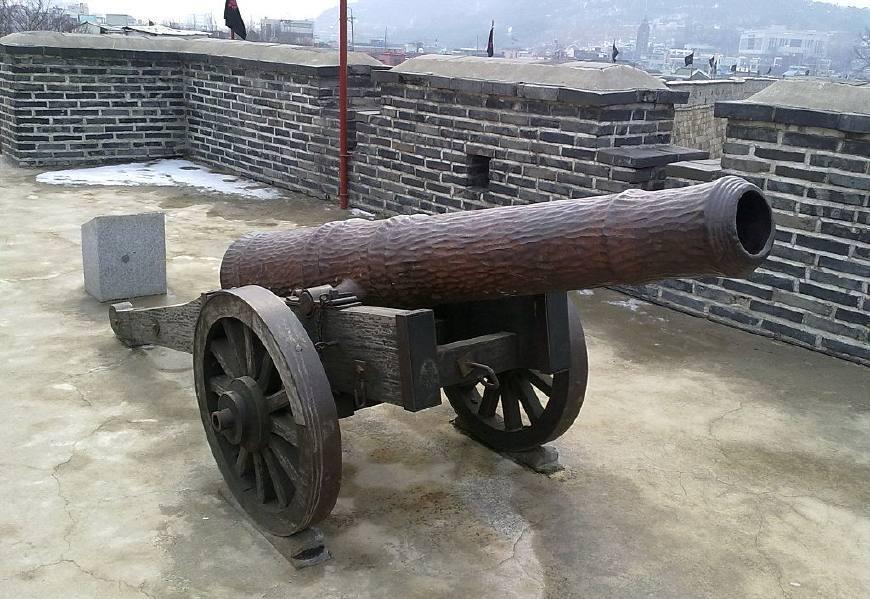Red cannon, originally known as Hongyi cannon, is a kind of shipborne cannon manufactured in Europe from 1500 to 1520, introduced to China in the late Ming Dynasty, military superstition, in order to pray for victory, often covered in these cannons with auspicious red cloth, it just so happens that the Manchus in the Qing Dynasty taboo "Yi" character, it was named red cannon.

There are advantages in the design, the barrel is long, the tube wall is thick, and it is gradually thickened from the muzzle to the tail of the gun, which is in line with the principle of high to low chamber pressure when gunpowder is burned, and this design can reduce the overall weight without reducing its strength. There are cylindrical lugs on both sides of the center of gravity of the gun body, and the gun can adjust the firing angle on this axis, and change the range with the amount of gunpowder. It is equipped with a crosshair and a shooting gate, and the ballistic trajectory is calculated according to the parabola, and the accuracy is very high. Most of the Hongyi cannons are about three meters long, 110 to 130 mm in caliber, and weigh more than two tons.
The Hongyi cannon is a type of artillery made in Europe in the early 16th century, which was introduced to China in the late Ming Dynasty, also known as the red coat cannon. The so-called "Red Yi", the Red Haired Netherlands and Portugal also. Therefore, many people think that the Hongyi cannon was imported from the Netherlands, in fact, at that time, the Ming Dynasty called all the front-loading smoothbore cannons imported from the West as the Hongyi cannon. According to research, at that time, only a small amount of the Hongyi cannons imported by the Ming Dynasty were imported from the Dutch East India Company, and later because of the Taiwan issue and the Dutch, most of them were traded with the Portuguese in Macau, the Ming Dynasty demand was huge at that time, and the Portuguese also acted as middlemen to sell British ship-borne cannons to China.
The self-made large-caliber fire bolts of the early Ming Dynasty are exactly the same in principle as these Hongyi cannons, all of which are front-loading smoothbore fire door ignition, but the specific production is very different. In the early Ming Dynasty, the fire barrel was mostly made of copper as raw material, the inner chamber was horn-shaped, the gun barrel appeared thin, and the gun barrel appeared too short in terms of caliber, and its appearance was basically the same as the earliest existing Yuan Dynasty "bowl mouth reaming". Compared with the Hongyi cannon, this kind of gunpowder is less filled, the gunpowder gas seal is not good, so the range is short, in addition, it is easy to overheat, the rate of fire is also slow, and the copper as the material is not easy to explode, but the cost is higher (copper can be used for copper coins, it is the metal for minting currency), and copper is too soft, each shot will cause the bore to expand, the shooting accuracy and range drop very fast, as a weapon, the life is too short, the only advantage is light weight. In the face of the Hongyi cannon, which weighed thousands of kilograms at every turn, the fire bolts of the early Ming Dynasty were really "small witches seeing big witches".